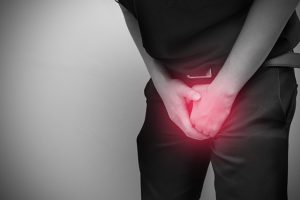
Lymphogranuloma venereum – causes, side effects and treatments at NaturalPedia.com
Friday, July 20, 2018 by Zoey Sky
http://www.naturalpedia.com/lymphogranuloma-venereum-causes-side-effects-and-treatments-at-naturalpedia-com.html

Lymphogranuloma venereum (LGV) is a sexually transmitted bacterial infection. The condition is a chronic/long-term infection of the lymphatic system.
LGV spreads because of three different types/serovars of the bacteria Chlamydia trachomatis (C. trachomatis). C. trachomatis is spread via unprotected anal, oral, or vaginal sexual contact.
Lymphogranuloma venereum is more common in Central and South America than in North America. LGV is also called lymphogranuloma inguinale and lymphopathia venereum.

Known side effects of lymphogranuloma venereum
Patients with lymphogranuloma venereum can experience the side effects of the disease at least several days or a month after they are exposed to the bacteria.
The side effects of LGV usually include:
- Blood in the stools/blood or pus from the rectum
- Drainage through the skin from lymph nodes in the groin
- Tenesmus/painful bowel movements
- Small painless sore on the male genitals or in the female genital tract
- Swelling and redness of the skin in the groin area
- Swelling of the labia (for women)
- Swollen groin lymph nodes on one or both sides (this can also affect lymph nodes around the rectum in individuals who have anal intercourse)
Risk factors for lymphogranuloma venereum may include:
- Being male
- Insertive oral intercourse
- Multiple sexual partners
- Prostitution
- Receptive anal intercourse
- Sexual contact in areas where the disease is endemic
- Unprotected sexual intercourse
- Using anal enemas
Body systems harmed by lymphogranuloma venereum
Lymphogranuloma venereum may cause the following complications, which can still occur even several years after the patient is infected:
- Encephalitis/brain inflammation (a very rare complication)
- Fistula/abnormal connections between the rectum and vagina
- Infections in the eyes, heart, joints, or liver
- Long-term inflammation and swelling of the genitals
- Scarring and narrowing of the rectum
Food items or nutrients that may prevent lymphogranuloma venereum
The following foods or nutrients can help prevent lymphogranuloma venereum or address its side effects:
- Cranberry juice – STDs often affect a patient’s bladder or urinary tract, and cranberry juice can help eliminate bacteria. It can also relieve irritation or pain. The juice can also prevent urinary tract infections (UTIs).
- Fermented foods – Fermented foods, like Greek yogurt, can help restore the natural pH balance in a woman’s system. Sources include coconut yogurt, kefir, kimchi, kombucha, miso, pickled vegetables, sauerkraut, and tempeh.
- Garlic – Garlic has natural healing properties. Additionally, it has antibacterial, antifungal, and antiviral properties. Garlic can also boost the immune system.
- Horseradish – Horseradish has antibacterial properties, and it can help treat urinary tract infections and lung infections. It is also an anti-microbial food.
- Pure raw honey – Honey has complex antibacterial properties, and it can help treat infections and fight antibiotic-resistant bacteria.
Treatments, management plans for lymphogranuloma venereum
Lymphogranuloma venereum can be treated with antibiotics (e.g., doxycycline and erythromycin).
However, individuals can also prevent infection by practicing safe sex:
- Always use a new condom or glove for your sexual partner/s.
- Use condoms and dental dams during sex and wear gloves during fisting.
- Wash sex toys with soapy water between partners, and use them with a condom.
Where to learn more
- 5 Things you must know about STDs
- 8 Effective Infection Prevention Tips for Staying Healthy
- Black seed oil: Have you heard of this historical holistic remedy that can fight STDs naturally?
- Men who take Viagra have 200 percent increased risk of sexually transmitted disease
- Top 7 Deadliest Diseases You Should Beware Of
Summary
Lymphogranuloma venereum (LGV) is a sexually transmitted bacterial infection. The infection is a chronic/long-term infection of the lymphatic system.
The side effects of LGV usually include blood in the stools, swelling of the labia, or tenesmus.
LGV may cause complications like encephalitis, fistula, or infections in the eyes, heart, joints, or liver.
Cranberry juice, fermented foods, garlic, horseradish, and pure raw honey can help prevent LGV or address its side effects.
LGV can be treated with antibiotics. However, individuals can also prevent infection by practicing safe sex.
Sources include:
Tagged Under: Tags: lymphogranuloma venereum





